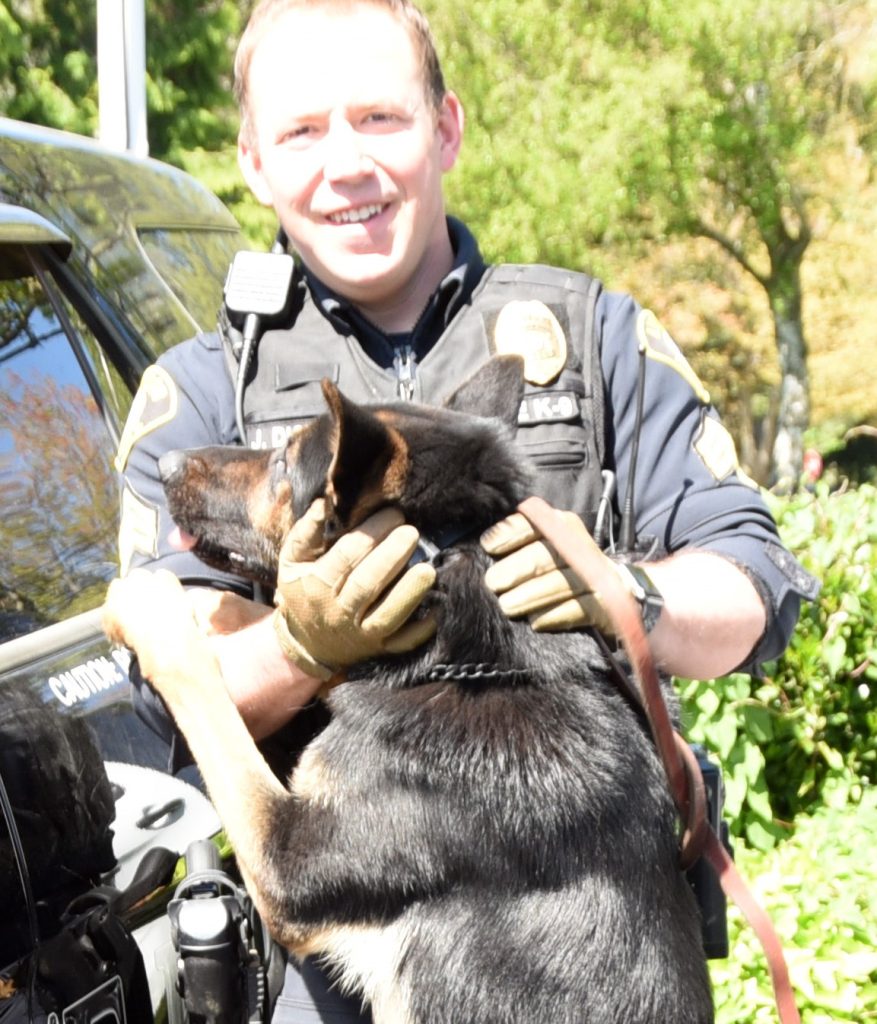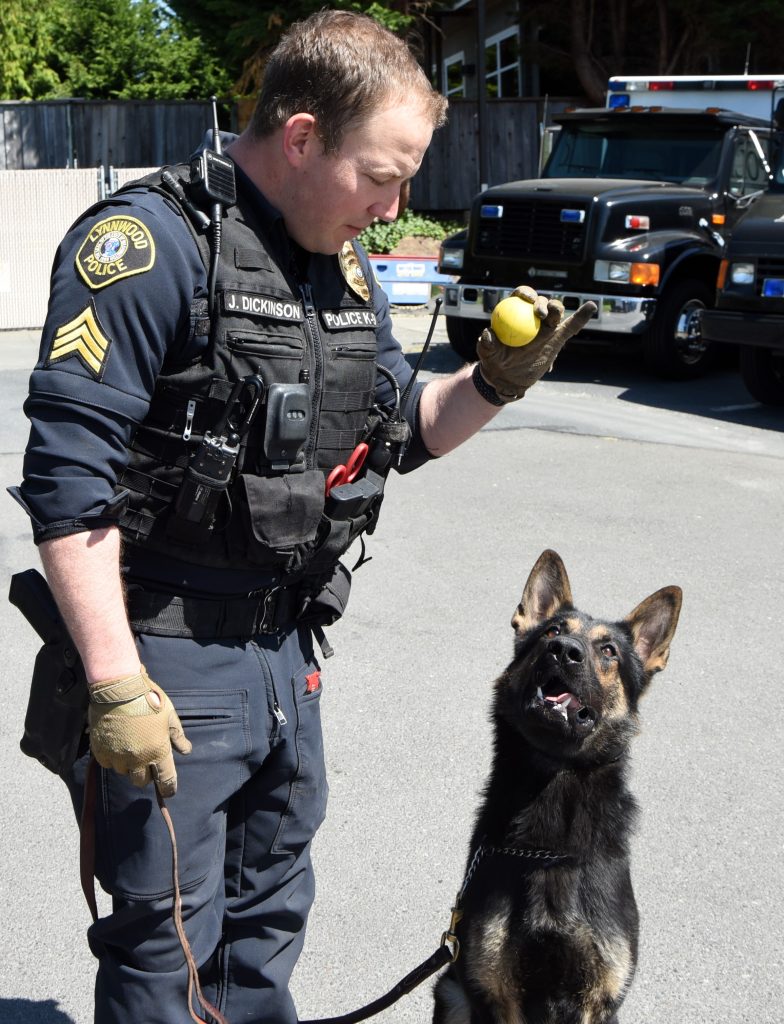By Carol Ladwig carol.ladwig@lynnwoodtimes.com

People in the Lynnwood area have probably never met a police professional quite as furry and friendly as Kiro the police dog. The 19-month old German Shepherd certainly looks the part of a working dog, but when he’s not actively sniffing for narcotics or searching for a missing person, he’s all playful puppy.
That’s fine by Kiro’s handler, Lynnwood Police Department K-9 Sergeant Joe Dickinson, who retired his first dog, Zando, April 2 of this year and spent several weeks last winter looking for his successor.
“Our priority was finding a social dog, that was number one,” said Dickinson. Second priority was basically the animal’s “ball drive,” its interest in chasing a ball or doing other work. The department, Dickinson said, wants a hard-working dog, of course, but it needs a happy, calm, approachable dog.

“We are in people’s communities and I need to be able to get this dog out, for people to say hi and be social. That’s incredibly valuable for us,” he said.
Kiro definitely brings that value to the job, with a constantly wagging tail, lolling tongue and readiness to have his ears and back scratched – by anyone. While he’s friendly to all, he’s devoted to Dickinson, watching his every move, responding instantly to commands, and often getting both of them wrapped up in his leash as he circles his handler, waiting for instructions, eager to please.
It’s taken Dickinson some getting used to, having a young and energetic dog again. His first dog, Zando, came to the department in 2011, when Dickinson joined the K-9 unit, and was a seasoned pro. The dog’s weak joints forced him to retire earlier this year, to a pampered life as Dickinson’s family dog, but not before he helped train Kiro, by example, in his new responsibilities.
Kiro, like the other three dogs in the department, goes on regular patrol duty with his handler, and is called out for specific needs of the department, mainly in tracking lost people, but also in detecting illegal narcotics. Often the lost people are children or dementia patients who need to be located for their own safety, but sometimes, they are criminal suspects.
In those cases, Dickinson said, “We do utilize bite and hold dogs,” but dog contact is actually rare, about 3 percent or less each year. He acknowledged that it might sound controversial, but “It’s a very calm, positive hold,” which the dog maintains until an officer takes control of the subject. Often, the dogs bite only the suspect’s clothing.
The dogs, Dickinson said, are great for de-escalating tense and emotional situations, and for officer safety.
It’s reassuring, Dickinson said, and he’s heard the same from other officers, when stopping a potentially dangerous subject, to hear the dog bark and to know that “I’ve got somebody who’s going to come out and help me if I need it.”
Personally, Dickinson knows that “Zando saved my life on a couple of calls, where dudes had guns, and were waiting in bushes.”
In one instance, he said, Zando had followed a suspect out of sight, “then he came out of the bushes with a gun in his mouth,” Dickinson said. After retrieving the gun, Dickinson said “I sent him back, and he came back with another gun.”
On another occasion, Zando located three of four suspected armed robbers, leading the fourth to surrender voluntarily. Dickinson says the officers “were probably more lucky than we were good,” that time, but he believes Zando played a big role in that success.
Kiro hasn’t accumulated any such stories, yet, but partnered with Dickinson, he’ll have a fulfilling career ahead.
“He’s my partner … he listens all the time – he’s not a big talker, but he’ll always listen.”
Author: Mario Lotmore









